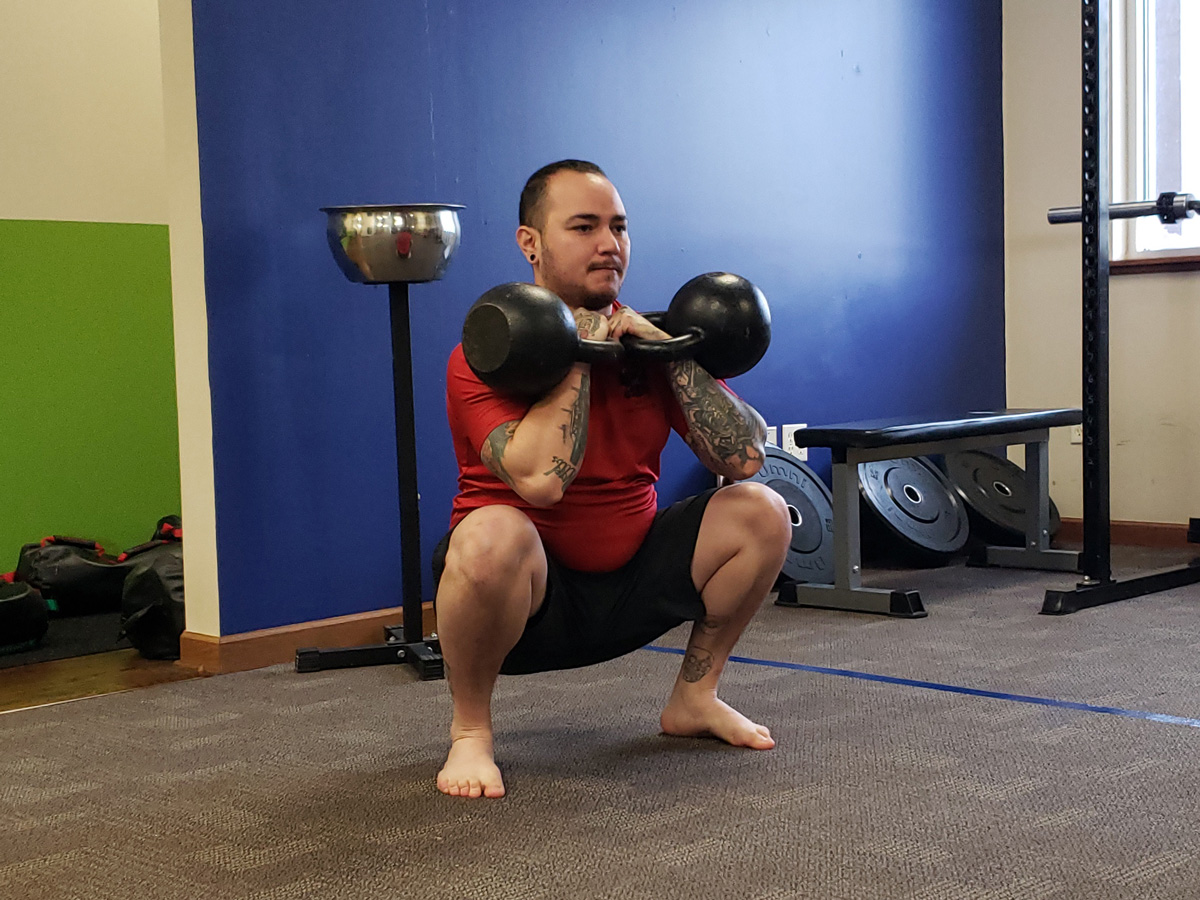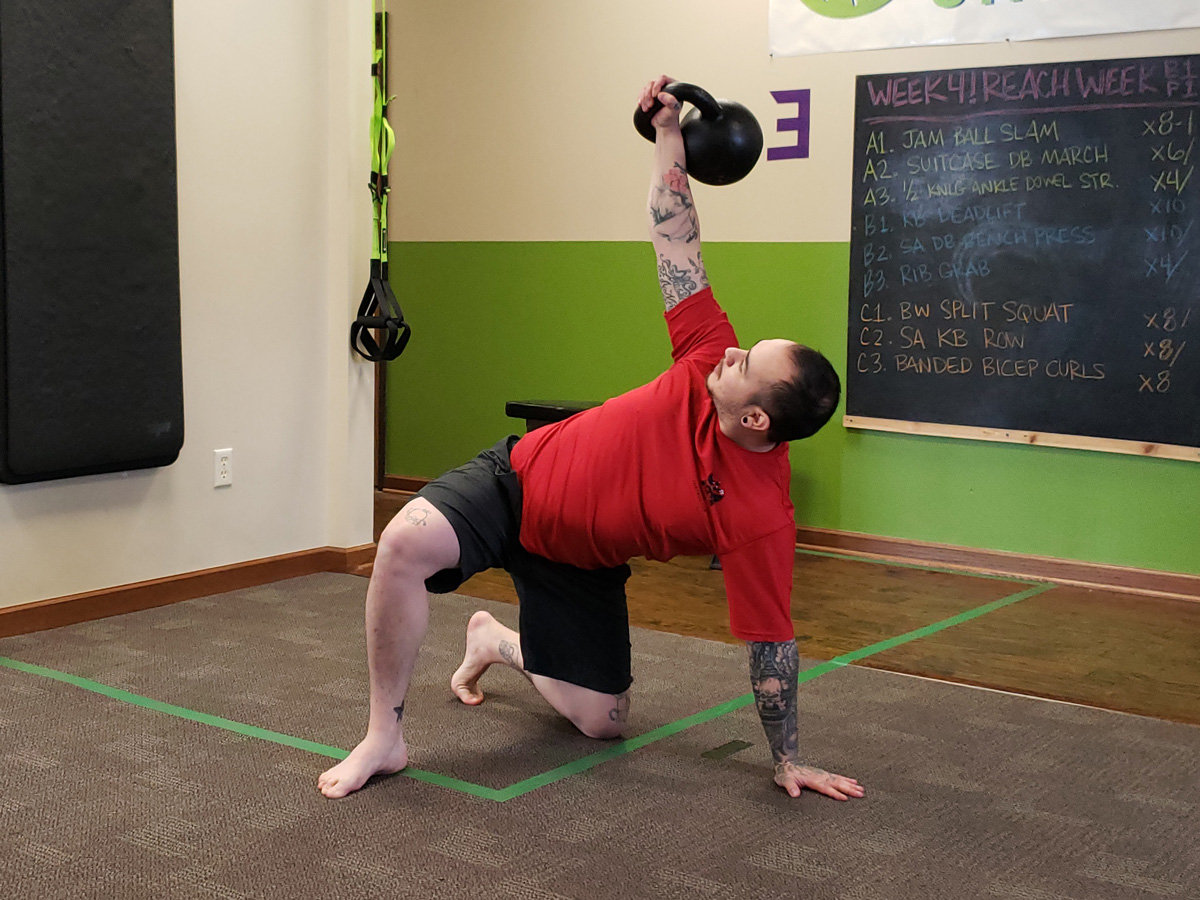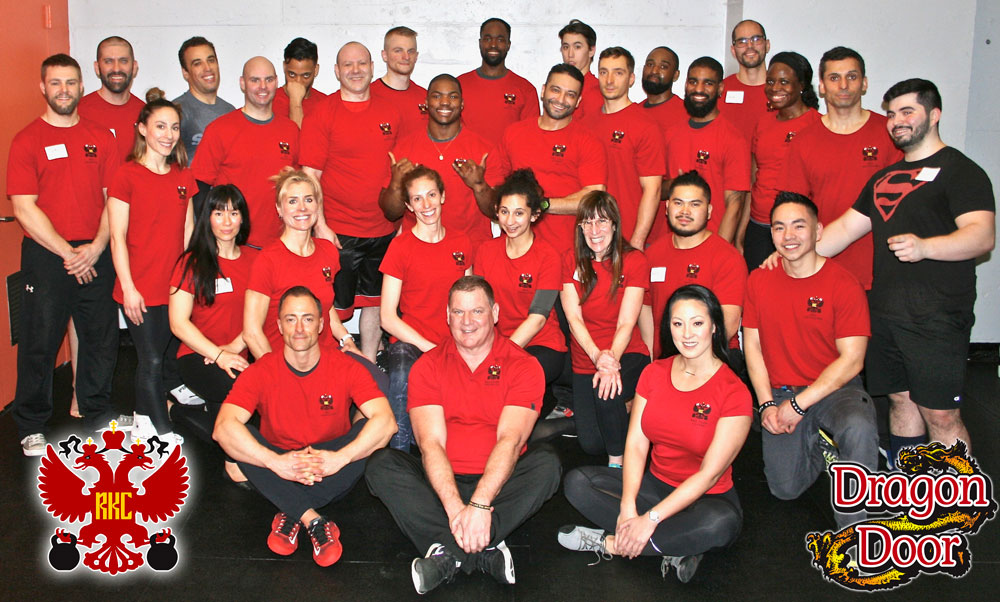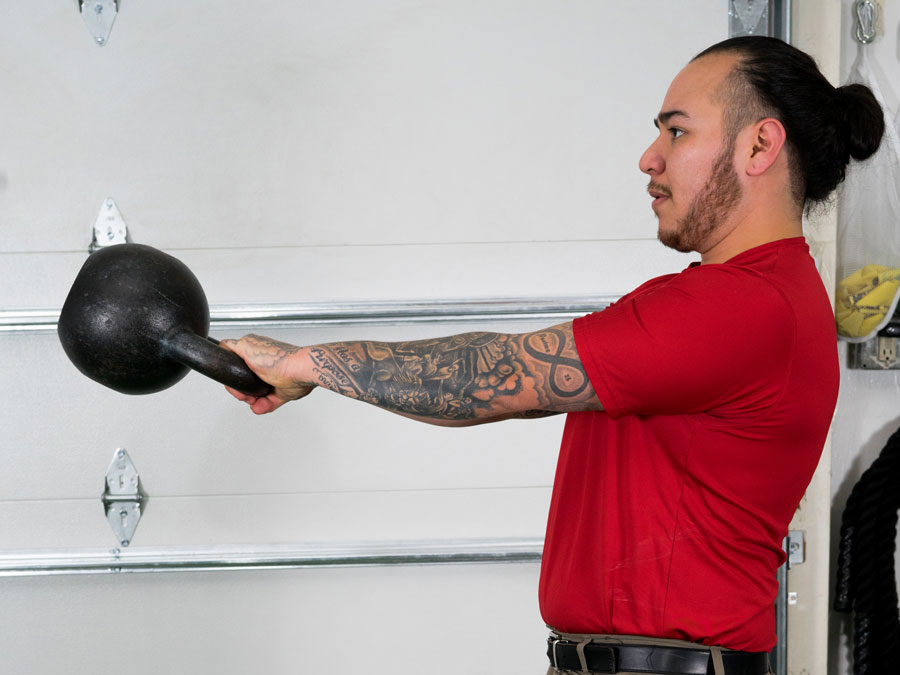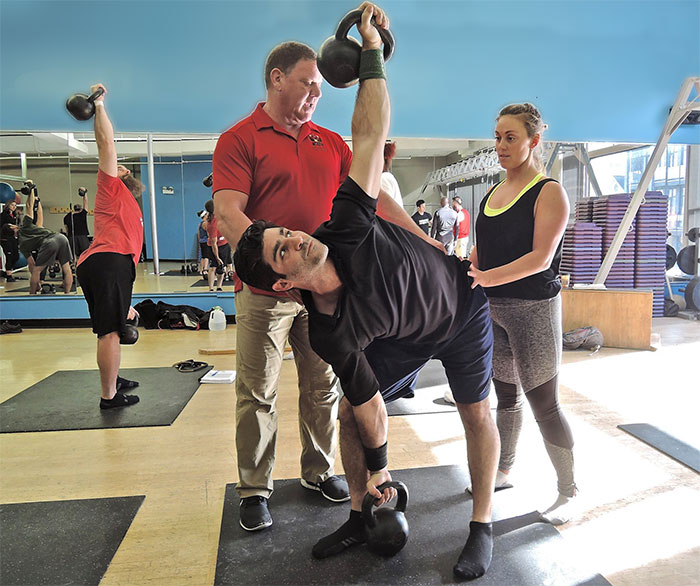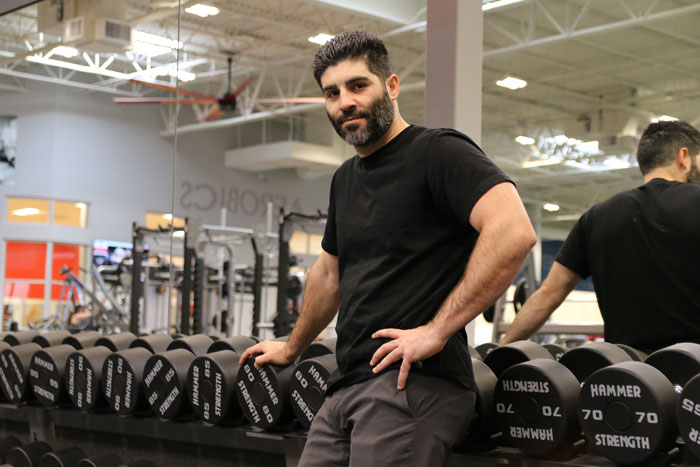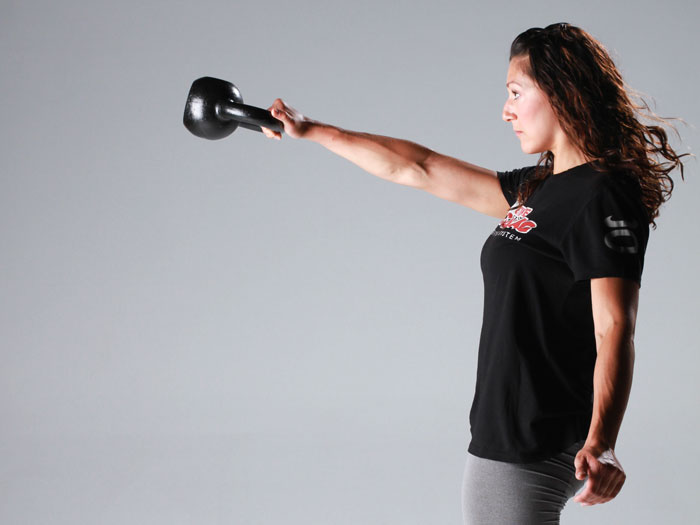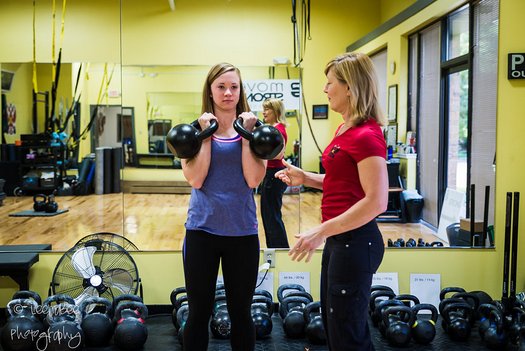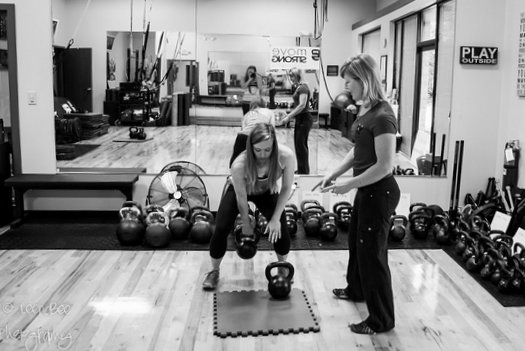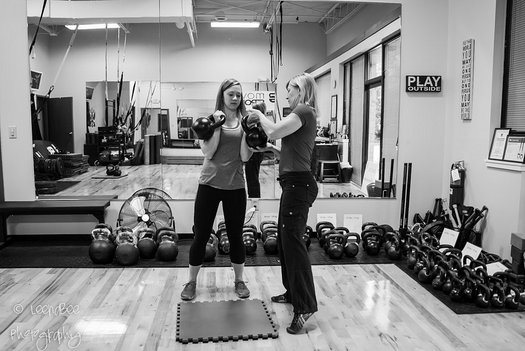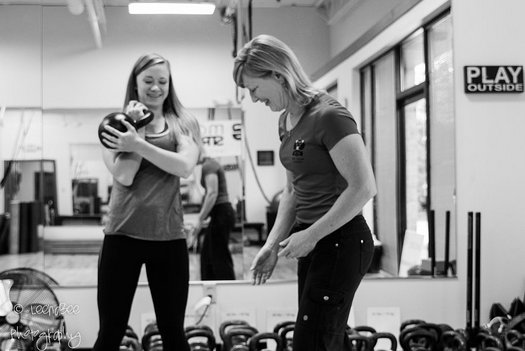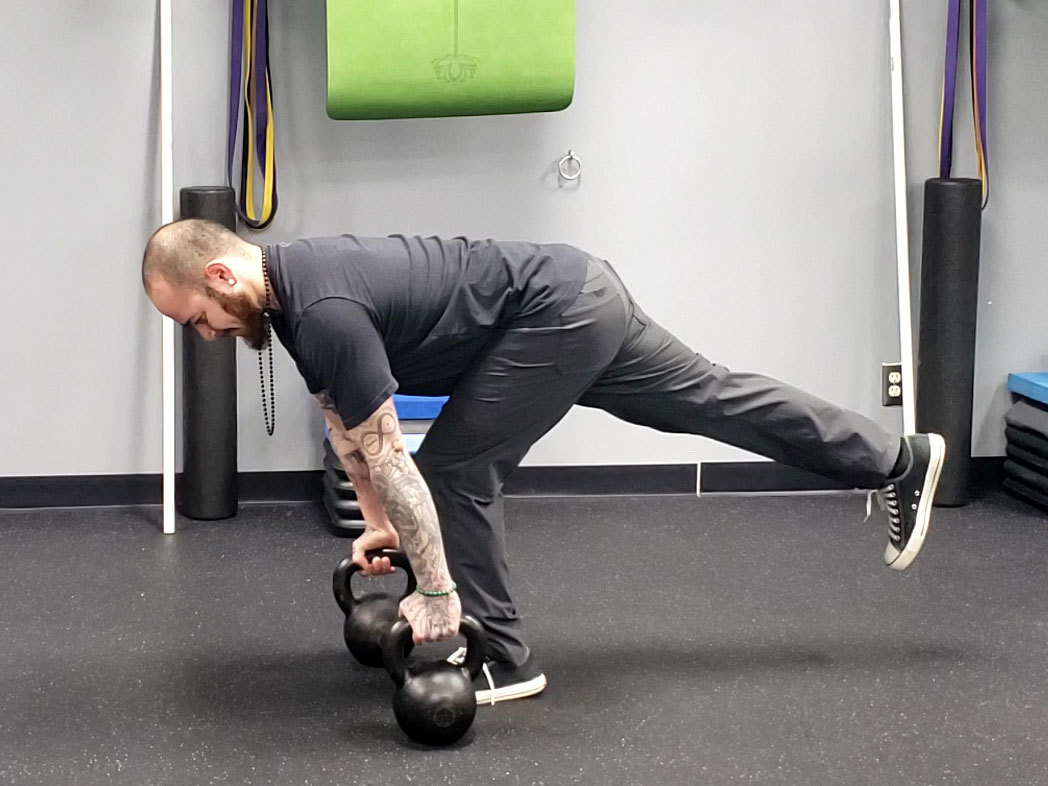
It’s that time of year again when most people are wanting to focus on getting back on track with their health and fitness goals. This includes people starting up new gym memberships and starting a workout plan that will help them accomplish the goals they’re setting.
The goals are typically going to be the similar. Some will work towards goals that change their body composition to either increase muscle mass or decrease body fat, while others will be focused on increasing strength or decreasing pain.
Either way your goals are going to need a tool to help you accomplish these tasks. That’s where kettlebell training can come in. The best part about kettlebell training is that you can either train with a coach in person or hire a coach online and train in the comfort of your own home. A professional will almost certainly help you be more successful in accomplishing your goals as a result of the wise guidance and the ongoing accountability.
Here are a few workouts that you can do using kettlebells to help you accomplish some of your goals for 2023!!
Decreasing Body Fat
If you have a goal to decrease body fat the first thing you need to do is find a variety of ways to measure your progress. Your body is not a machine and it will have days and weeks where things will fluctuate. Having a variety of different tools will help you maintain your mental health and keep you on track. My favorite ways of tracking this goal is seeing how clothes fit, taking monthly waist measurements, measuring body fat percentages, and seeing how consistent I am with my nutrition.
Your priority with this goal is to monitor your intake with habits that will help support your goal — the workouts will only help supplement the goal. Slightly decreasing your caloric intake will help you with decreasing your bodyfat because your body will be using your stored body fat as means of a fuel to help keep you energized throughout the day.
Decreased Body Composition Workout
Circuit Training 20-30 minutes
A1. Kettlebell Carries x:30 sec work/:30 sec rest
A2. Kettlebell Swings x:30 sec work/:30 sec rest
A3. Kettlebell Goblet Squats x:30 sec work/:30 sec rest
A4. Kettlebell Bent Rows x:30 sec work/:30 sec rest
A5. Kettlebell Thrusters x:30 sec work/:30 sec rest
Increasing Muscle Mass
If you have a goal of increasing your body composition by adding more muscle mass to your body then the goal will be to go into a caloric surplus. Increase the amount of meals you’re eating in the day or increase the amount of food you are eating in the day. Either way, as long as you are increasing the calories to supplement your goals this will help you achieve them. Aside from increasing your caloric intake, your training will need more volume and time under tension to increase the size of your muscles. This means more sets and using eccentric tempos or other variations to challenge the body.
Increased Body Composition Workout
Density Training 30-40 minutes
A1. Turkish Get Up x1 rep on each side
A2. Ratchet Set Kettlebell Front Squat x5 reps (down all the way, ¼ way up then back down, then ½ way up back down, then all the way up)
A3. Eccentric Kettlebell Deadlift x6 reps (4 seconds down)
A4. Isometric Single Arm Rows x8 reps (2 second pause at top)
A5. 1.5 rep Double Arm Kettlebell Press x6 reps (half way up, back down, all the way up
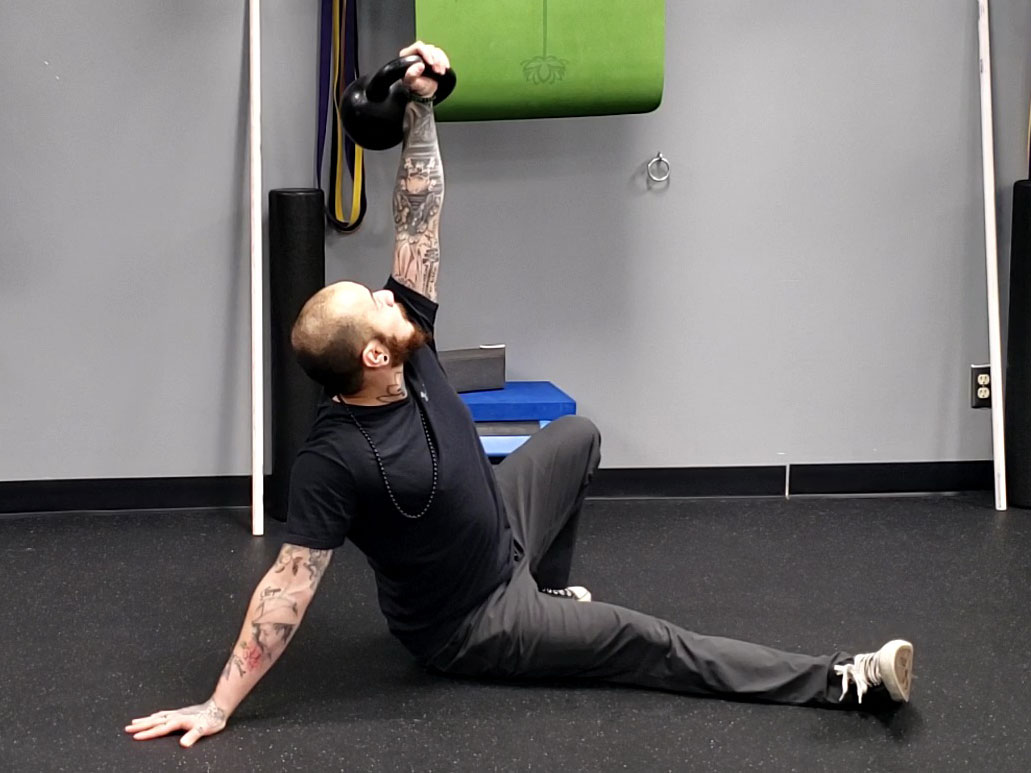
Increasing Strength
Similar to increasing your body composition, building strength requires the body to increase its caloric intake to supplement the training you will be doing. Strength training requires a greater intensity with the loads you are using and needs lower repetitions. This allows for the body to use sub-max weight in lower rep volumes. Using more sets with lower reps and variations such as ladder sets or plus sets help accomplish this goal.
Increased Strength Workout
Strength Training
A1. KB Split Squat 5 sets of 5 reps
A2. KB Bent Row 5 sets of 8 reps
A3. KB Halos 5 sets of 3 reps each direction
B1. Double Arm Single Leg Kettlebell Deadlift 5 sets of 5 reps each side
B2. Kettlebell Bottom Up Press 5 sets of 5 reps each side
B3. Half Kneeling Hip Flexor Stretch 5 sets of 3 breathes each side
C1. Kettlebell Swings 5 sets of 10 reps
Decreasing Pain
Most of us are going to be dealing with some sort of current or past injury that has limited daily tasks such as going up and down stairs, carrying groceries into the house, getting up and off the floor, tight low back or shoulders limiting us from other activities in the day.
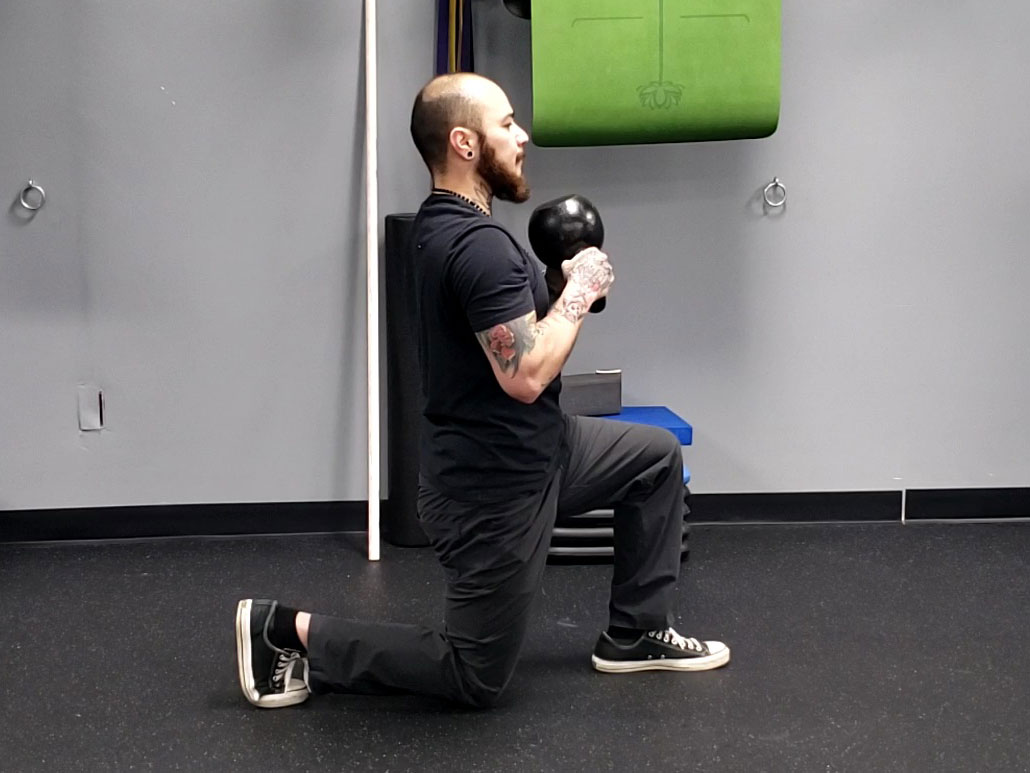
When it comes to anything that is causing sharp pain speak with a medical professional to get their expert advice to see what is causing the pain. If it’s dull and achy, proceed with caution and make recommendations to see manual therapy or other modalities that will give your client relief. At my gym, Restored Strength, we primarily work with people who are overcoming or needing help overcoming old or current injuries. Here’s how we work with those clients to help them move and feel better while increasing their strength and endurance.
Restorative Strength Training
A1. Half Kneeling Kettlebell Halo 3 sets of 3 reps each direction
A2. Kettlebell Goblet Squat/Elevated KB Goblet Squat 3-4 sets of 4-8 reps
A3. Single Arm Kettlebell Row/Assisted Single Arm Kettlebell Row 3-4 sets of 4-8 reps each side
B1. Kettlebell Hip roll 3 sets of 3 reps each direction
B2. Kettlebell Deadlift/RDL 3 sets of 6-10 reps
B3. Half Kneeling Kettlebell Press/Half Press 3 sets of 4-8 reps each side
There are a wide variety of tools and exercises you can use to help you accomplish your goals for this year. The biggest thing to remember is that you have plenty of options — but take into consideration that one of the most effective options to use is a kettlebell, because of its extreme versatility.
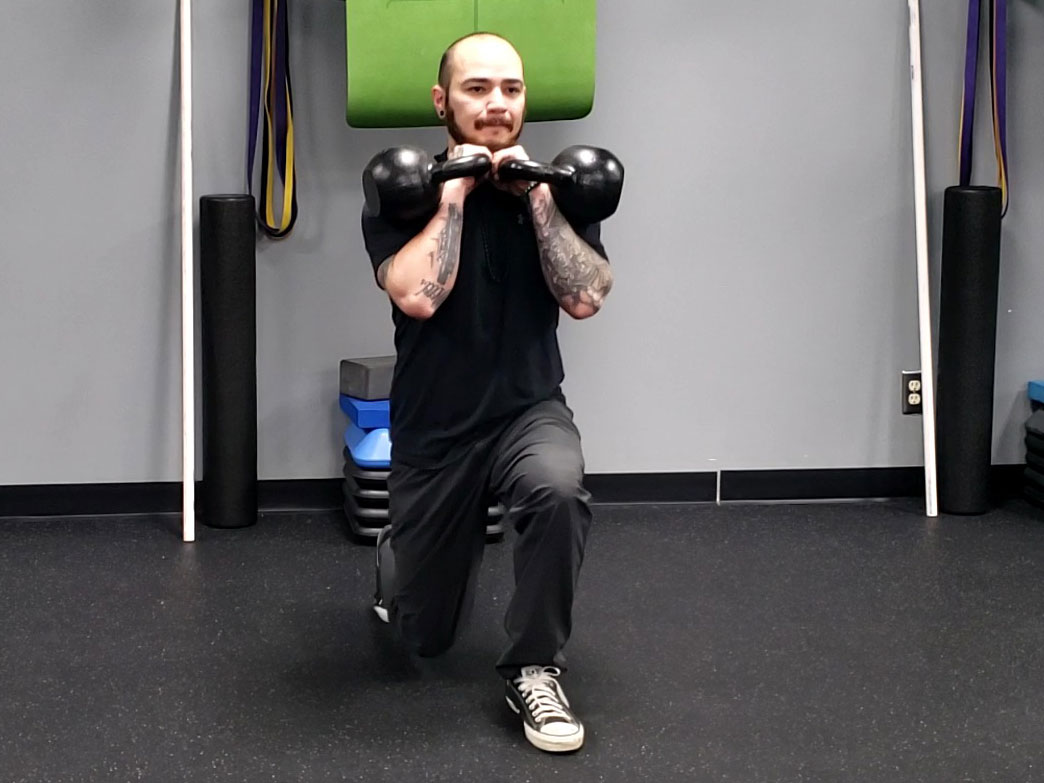
***
William Sturgeon, RKC Team Leader, RKC II trains clients at his gym, Restored Strength. Contact him through his website at RestoredStrength.com or follow him on Facebook: facebook.com/restoredstrength

